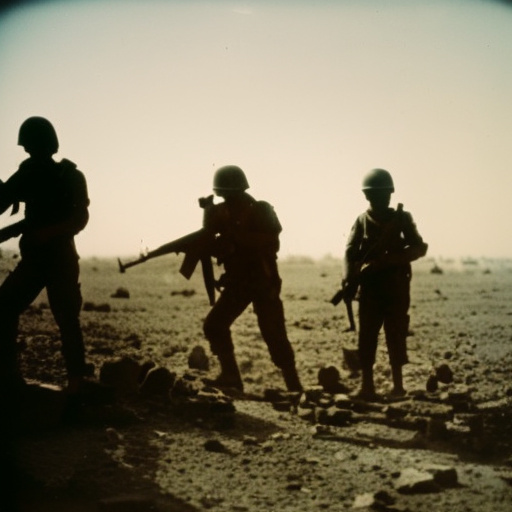Summary:
The Iraqi conflict, which began in 2003 and continues to the present day, is a complex and multifaceted conflict that has had far-reaching consequences for Iraq and the wider Middle East region. It was triggered by the United States-led invasion of Iraq in March 2003, which aimed to remove Saddam Hussein from power and eliminate Iraq’s alleged weapons of mass destruction. However, the conflict quickly evolved into a protracted insurgency, sectarian violence, and a power struggle between various factions and militias.
Background:
The roots of the Iraqi conflict can be traced back to the early 20th century when Iraq gained independence from the Ottoman Empire. The country experienced decades of political instability, including military coups and the rise of Saddam Hussein’s Ba’ath Party. Hussein’s regime was marked by authoritarian rule, human rights abuses, and conflicts with neighboring countries, such as the Iran-Iraq War in the 1980s and the Gulf War in 1990-1991.
The Invasion and Toppling of Saddam Hussein:
In 2003, the United States, supported by a coalition of countries, launched a military invasion of Iraq. The primary justifications for the invasion were the alleged presence of weapons of mass destruction and Iraq’s alleged support for terrorist organizations. The invasion quickly overthrew Saddam Hussein’s regime, and he was captured by U.S. forces in December 2003.
Insurgency and Sectarian Violence:
Following the fall of Saddam Hussein, Iraq descended into a period of intense violence and instability. Insurgent groups, including remnants of Hussein’s Ba’ath Party and foreign fighters, launched a guerrilla war against the U.S.-led coalition forces and the newly formed Iraqi government. The insurgency was characterized by suicide bombings, assassinations, and attacks on infrastructure and security forces.
The conflict also took on a sectarian dimension, with deep divisions between Iraq’s Sunni and Shia populations. Shia militias, such as the Mahdi Army, and Sunni extremist groups, such as Al-Qaeda in Iraq, carried out brutal attacks against each other and targeted civilians from rival sects. The violence escalated further with the bombing of the Al-Askari Mosque in Samarra in 2006, which triggered a wave of sectarian violence and reprisal attacks.
U.S. Troop Surge and Subsequent Withdrawal:
In 2007, the United States implemented a troop surge, increasing its military presence in Iraq in an attempt to quell the violence and stabilize the country. The surge, combined with the formation of Sunni Awakening Councils, which turned against Al-Qaeda in Iraq, contributed to a temporary reduction in violence. However, the underlying sectarian tensions and political divisions remained unresolved.
In 2011, the United States officially ended its combat mission in Iraq and withdrew the majority of its troops. This marked a turning point in the conflict, as the Iraqi government assumed greater responsibility for security. However, violence continued, albeit at a reduced level, with periodic spikes in attacks by insurgent groups.
Rise of ISIS and Current Situation:
The power vacuum created by the withdrawal of U.S. troops, combined with the ongoing political and sectarian tensions, provided an opportunity for the emergence of the Islamic State of Iraq and Syria (ISIS). In 2014, ISIS launched a lightning offensive, capturing large swathes of territory in Iraq and Syria and declaring a self-proclaimed caliphate.
The Iraqi government, with the support of international coalition forces, launched a military campaign to defeat ISIS. By 2017, ISIS had lost control of most of its territory in Iraq, although it continues to carry out sporadic attacks and maintain an underground presence.
Today, Iraq remains a deeply divided country, grappling with the legacy of the conflict. The Iraqi government faces numerous challenges, including political instability, corruption, and the need for post-conflict reconstruction. The ongoing conflict in neighboring Syria and regional power struggles further complicate the situation in Iraq.












